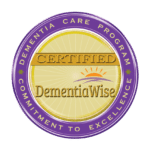
You’ve been catching news of scabies outbreaks in veteran’s homes, daycare centers, and nursing homes. You’ve heard all about the itchiness and crusty skin patches, but you know nothing of the disease. Here’s what you need to know about scabies.
It All Starts With the Scabies Mite
Scabies is an infestation of mites that burrow under the top layers of skin. There, they feast on fluids and reproduce. Generally, the symptoms of scabies appear about one to two months after skin-to-skin contact with an infected person. Symptoms include:
- Extremely itchy skin, especially in children and the elderly
- Raised tracks where the mites burrow in tunnel-like paths
- Pimples, scales, and blisters
- Open sores from the scratching
Scabies tend to aim for the waistline, breasts, hands, neck, face, and genital areas. They are tiny so it’s hard to see them. Those that can see them describe them as looking like tiny grains of black pepper. Usually, doctors use skin scrapings to diagnose them.
How Do You Get Scabies?
Prolonged contact with scabies is needed to contract them. It’s common to get them when sharing an infected person’s bed or towel. Intercourse is a possible way to get them from someone else. Sitting next to someone closely while watching a movie is one way you can get them. You won’t likely get them by quickly shaking hands.
How is Scabies Treated?
Prescription topical medications used to kill the mites are prescribed when a person tests positive for scabies. The cream or lotion is usually spread over the entire body for up to a day. Oral medications may also be used.
The itchiness is usually unbearable so patients will scratch themselves and create open sores. These sores can get infected. If an infection is present, antibiotics will be prescribed to treat the infection. Antihistamines and hydrocortisone creams can help ease the itching.
Protecting Your Parent From Scabies
When you hire a new caregiver, ask the home care agency if they do health screenings. Some agencies do check that new employees are screened for scabies. It’s not always the case. If a caregiver is providing care to someone else who has scabies, ask the agency if they notify other clients. Scabies can be treated.
It’s important that your parent follow all instructions closely to end the mite infestation. Medication reminders may be needed. Home care professionals can help with medications and application of creams to help ease the itching.
Wash bedding and towels in hot water and bleach to kill any mites in the material. Pillows and items that cannot be washed should be sealed up in airtight plastic bags and left unopened for at least one week. Carpeting and upholstery should be cleaned with an upholstery cleaner and vacuumed each day for a couple of weeks. Home care professionals can also help with laundry and light housekeeping tasks. Call now to learn more.
If you or an aging loved one are considering homecare in Cinco Ranch, TX, please call the caring staff at At Your Side Home Care. We will answer all of your senior care questions. Call today: (832) 271-1600.
Our Certified Nurse Aides, 24-Hour Live-in Assistants and Home Health Aides are available 24 hours a day, 365 days a year. We also provide the security and confidence of 24-hour Telephone Assistance, so fast, reliable help is always available when it's needed. To learn more about our homecare services see our homecare services page.
Different people need different levels of homecare. To meet the requirements of our clients, At Your Side Homecare maintains consistent staffing levels of caring professionals. Homecare service is available for as little as a few hours a week, or as many as 24 hours a day, seven days a week
- 5 Signs a Senior Might Be in the Beginning Stages of Dementia - April 25, 2025
- What Solutions Can Help Seniors with Mental Health Challenges? - April 18, 2025
- How Does Senior Home Care Help Make Aging in Place Possible? - April 11, 2025



